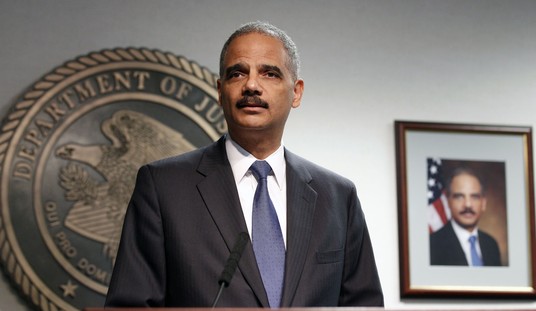The first question to ask is, why bother? Senate Majority Leader Harry Reid and Budget Committee chair Patty Murray have already decided not to produce a budget for FY2015, an announcement that got a bit lost in the Russian invasion of Crimea at the end of last week. Consider this an example of listbox-checking at the White House, and little more. OMB rolled out its eight-page brief this morning of the budget proposal called “Opportunity for All,” which will end up being just as stillborn as Barack Obama’s last four budget proposals.
A Roadmap for Growth, Opportunity, and Fiscal Responsibility: The President’s Budget provides a roadmap for accelerating economic growth, expanding opportunity for all Americans, and ensuring fiscal responsibility. It invests in infrastructure, job training, preschool, and pro-work tax cuts, while reducing deficits through health, tax, and immigration reform.
Builds on Bipartisan Progress: The Budget adheres to the 2015 spending levels agreed to in the Bipartisan Budget Act and shows the choices the President would make at those levels. But it also shows how to build on this progress to realize the nation’s full potential with a fully paid for $56 billion Opportunity, Growth, and Security Initiative, split evenly between defense and non-defense priorities.
If this truly built on “bipartisan progress,” then Reid would rush it through the Senate to put pressure on House Republicans. Murray’s demurral tells us all we need to know about the White House’s “bipartisan” approach on budgeting. The tear sheet is basically a regurgitation of Obama’s continuing demands for “infrastructure” spending as “investments,” which the White House claims will reduce deficits, both in real terms and as a share of the GDP.
Pay attention to the lead set of bullet items, especially transportation:
Stronger Growth and Job Creation:
o Advanced manufacturing – Invests in American innovation and strengthens our manufacturing base, including a national network of 45 manufacturing institutes.
o Research and innovation – Supports ground-breaking research to fight disease, protect the environment, and develop new technologies, and makes permanent the R&D Tax Credit.
o Pro-growth infrastructure – Lays out an ambitious, four-year $302 billion surface transportation reauthorization proposal paid for with transition revenue from pro-growth business tax reform.
o Government reform – Promotes government management that delivers improved services that are more effective, efficient, and supportive of economic growth.
“Transition revenue from pro-growth business tax reform”? That would require the Senate to actually produce a business-tax reform, a possibility that the White House closed by making outgoing Senator Max Baucus the ambassador to China, even though he knew little about his assignment. Until then, he and Orrin Hatch had been working on the Finance Committee to produce an overhaul of the tax code for both businesses and individuals that would have made the US more competitive and tax planning more straightforward. His replacement, Ron Wyden, will have other priorities.
His colleague Barbara Boxer certainly does. The revenue for transportation spending will come from new or higher refinery taxes, Boxer told the American Association of State Highway and Transportation Officials, since higher gas taxes are not politically possible and new mileage taxes are still a ways off. No matter what, though, Boxer pledged to get more funding, because Democrats won’t even consider looking for ways to spend less:
“I don’t see support for raising the gas tax and there is absolutely no way we’re going to cut spending, so it’s going to have to be a creative way to fund this in reality,” Boxer said.
“The administration, you are going to be hearing from them today, is that right? I think you’ll be excited at what they have done on this whole area of transportation,” Boxer told the annual AASHTO Washington Briefing. “They’re looking at tax reform which is certainly one way to make sure we have the funding for six years.”
The Federal Highway Administration has projected that the Highway Trust Fund, supplied by gasoline and diesel fuel taxes, will have to soon alter reimbursements to states for work due to a shortfall. The Congressional Budget Office predicts the Highway Trust Fund could run out of money by August.
Boxer says she’s supportive of new taxes for additional funding.
“Either we’re going to replace the gas tax with another way of funding which I love, which is the fee at the refinery level, I think I may be the only one that likes that idea, so I haven’t seen a groundswell of support for that idea.”
Note too the promise that government “reform” will generate more funds for Obama administration priorities. As far back as 2009, the White House has claimed that they couldn’t find any more spending to cut through reform. When did that change?
Readers probably didn’t need the Washington Post to tell them that Obama’s foreign policy comes from a rich fantasy life — and they won’t need the Post to tell them the same about his economic projections:
President Obama is just out with his newest budget request — which forecasts a dramatic reduction in deficits over the coming decade. The request paints a much rosier debt scenario than a report released by the nonpartisan Congressional Budget Office a month ago. In his budget request, Obama projects public debt as a percentage of gross domestic project falling to 69 percent by 2024, while the CBO has it rising to 79 percent — a difference of 10 percentage points, or roughly $2.7 trillion.
This is largely because Obama assumes the passage of legislation that the CBO doesn’t, and he assumes those laws will generate far more revenue over the next decade. In 2024, the spending/revenue gap (i.e., the annual deficit) in Obama’s budget amounts to 1.6 percent of GDP. CBO’s projected deficit is more than twice that, at 4 percent of GDP.
A $2.7 trillion difference? That’s like an entire year of federal spending … or at least it was during the Bush administration and Republican control of Congress.








Join the conversation as a VIP Member